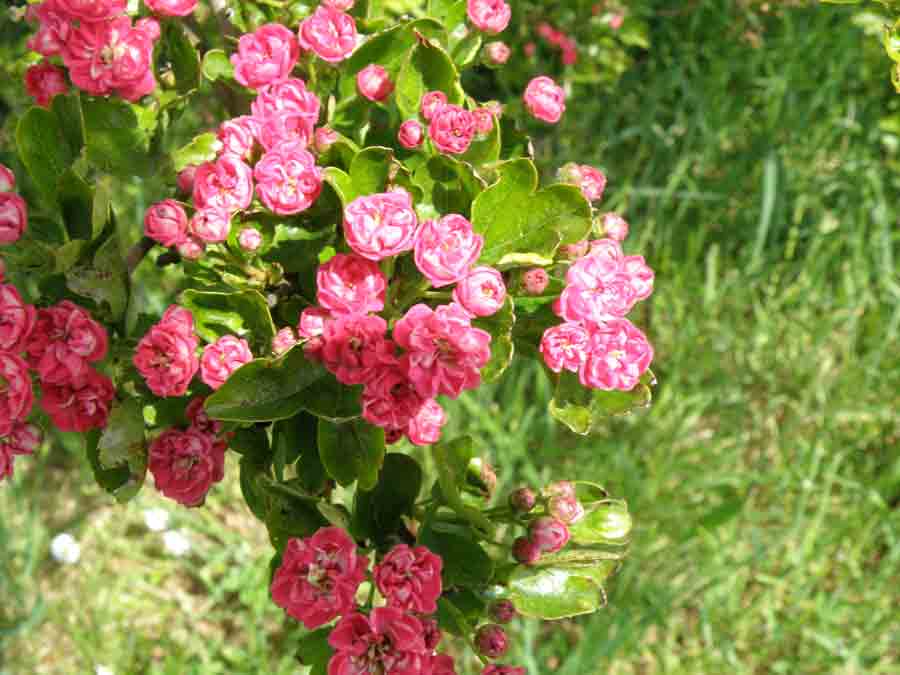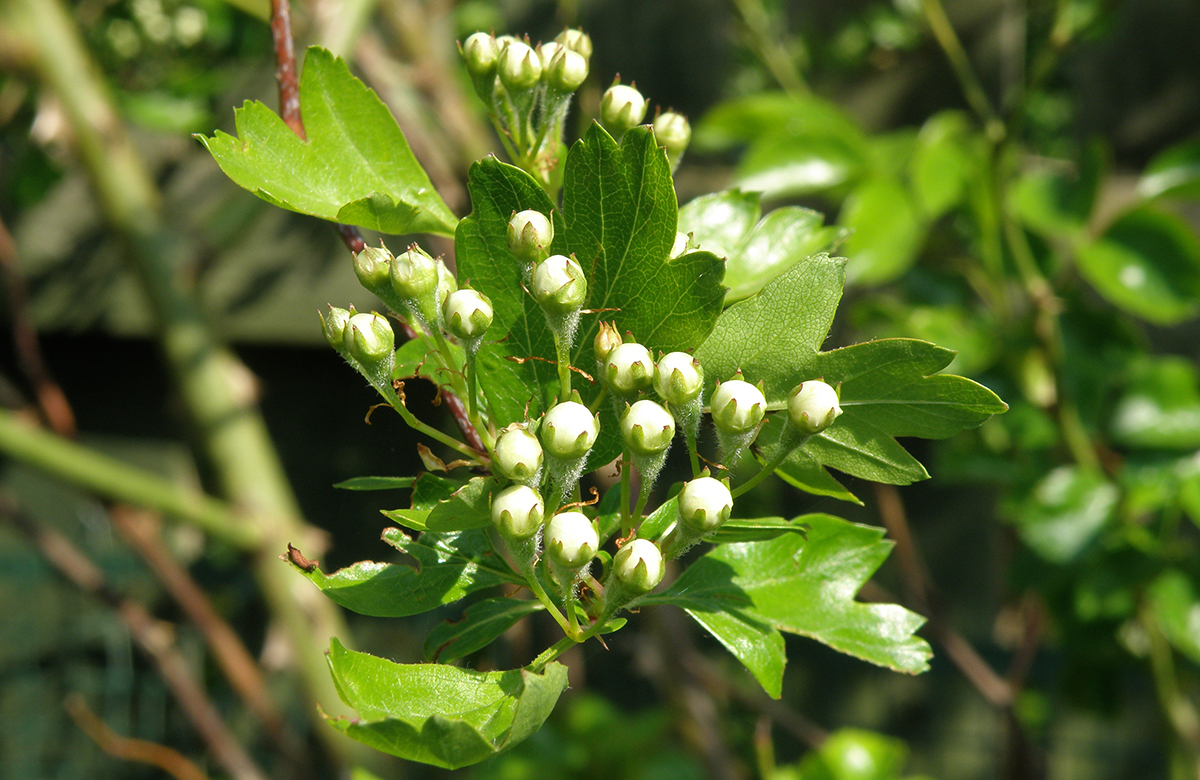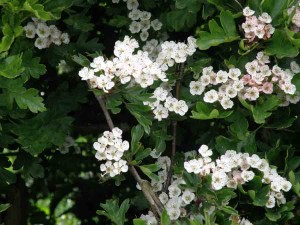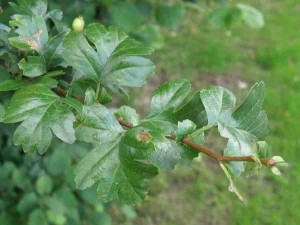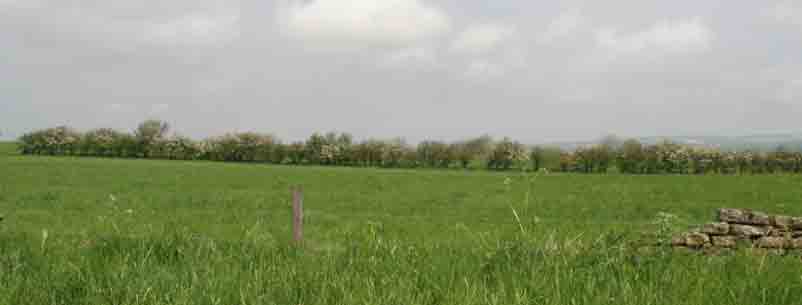
The common hedgerow plant Hawthorn is a familiar sight all over the UK and gets it name from it’s fruit which have the common name Haws and is sharp thorns. Also known as May or Mayflower due to its flowering time, it also goes by the common Quickthorn and Maythorn. Correctly known as Crataegus monogyna Jacq. It was placed in the genus Crataegus, created by Linneus, by Nikolaus Joseph von Jacquin (1727–1817) and first published in his 1775 flora of Austria.
Its fragrant white flowers are one of the heralds of spring; their being borne with the leaves makes it easy to distinguish at a distance from Blackthorn, Prunus spinosus, as that flowers earlier and before its leaves have opened. Its reliable stocky growth and mass of intertwining braches covered in sharp thorns has made it the commonest hedging plant in the countryside. Historically it was laid to form hedges where its upright branches were cut nearly through, bent over and interwoven but these labour intensive skills are now little seen and it is cut with a variety of mechanical methods, all of which it happily tolerates. It is in fact very tolerant of being cut, and if can be cut flush with the ground it will still re-grow.
Its widespread occurrence can lead to related plants being misnamed C. monogyna and in fact globally Crataegus L. is a very large genus containing its being estimated something like 200 species. In practice the most likely plant to be confused with C. monogyna is Crataegus laevigata (Poiret) DC., known as the Midland Hawthorn or Two-styled Hawthorn, and the red flowered form Crataegus laevigata ‘Paul’s Scarlet’ is widely planted. Its main difference is that the leaves are not as deeply lobed as C. Monogyna but if you careful examine the flowers you will also see that C. monogyna generally has only one female style where as C. laevigata generally has two; hence the repective names monogyna and two-styled. In most garden settings it’s probably safe to assume if it’s a white flowered hawthorn its C. monogyna and if red then Crataegus laevigata‘Paul’s Scarlet’
